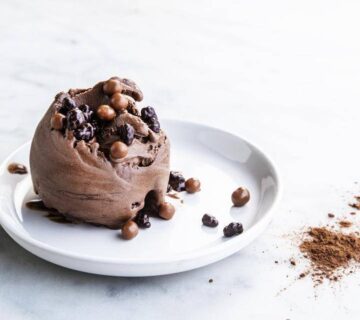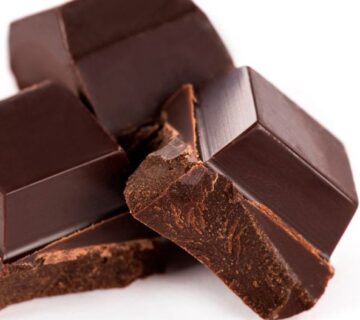Cocoa liquor, often referred to as cocoa mass, is the fundamental ingredient that defines the quality, texture, and sensory experience of every chocolate product. For food manufacturers across Egypt, sourcing consistent and high-quality cocoa liquor has become a strategic decision—one that directly influences production efficiency, flavor profiles, and product durability.
As consumer demand in the Middle East and North Africa (MENA) region shifts toward premium and diversified chocolate products, Egyptian factories are under increasing pressure to secure reliable cocoa liquor suppliers that meet both global standards and local regulatory requirements. This article examines the technical aspects, procurement challenges, and supply chain considerations involved in selecting a trusted cocoa liquor supplier in Egypt—supported by practical insights from MT Royal, a recognized industrial supplier serving manufacturing facilities across the region.
Understanding Cocoa Liquor: Definition and Production Fundamentals
Cocoa liquor is produced by grinding roasted cocoa nibs into a fine paste, creating a dense, rich mass containing approximately 50–55% cocoa butter and 45–50% cocoa solids. It is the non-alcoholic base from which both cocoa powder and cocoa butter are extracted.
In large-scale industrial environments, the technical specifications of cocoa liquor are crucial. Factors such as fat content, particle size distribution, moisture level, and flavor development directly influence downstream processing. For Egyptian confectionery manufacturers, particularly those producing compound chocolate, biscuits, coatings, and fillings, the consistency and purity of cocoa liquor determine the efficiency of tempering and the quality of the final product.
Key Industrial Benefits of Cocoa Liquor
When integrated into manufacturing operations, cocoa liquor provides several operational and sensory benefits:
- Flavor Development – Acts as the foundation for chocolate flavor; variations in bean origin and roasting determine the final sensory output.
- Viscosity Control – Affects fluidity during refining and conching stages.
- Fat Stability – Maintains uniformity in fat crystallization, reducing bloom formation in finished products.
- Nutrient Retention – Contains natural antioxidants and polyphenols beneficial for nutritional labeling.
- Processing Efficiency – Enhances dispersion of dry ingredients in mass production.
Factories across Egypt that produce molded chocolate or couverture blends often depend on cocoa liquor specifications that align with international standards such as ISO 2451 and Codex Alimentarius guidelines for cocoa products.
The Egyptian Market Landscape for Cocoa Liquor
Egypt’s food processing sector is rapidly modernizing. With Cairo serving as a major regional hub for confectionery and chocolate manufacturing, the demand for consistent cocoa ingredients continues to expand.
Several factors contribute to this growth:
- Increased consumer spending on confectionery and bakery products
- Expansion of export-oriented food processing plants in 6th of October City and Alexandria
- Strategic trade relationships with West African cocoa-producing nations
- Rising investment from European and Gulf-based confectionery companies establishing production lines in Egypt
Despite these opportunities, many local manufacturers still face challenges related to sourcing reliability, supply chain delays, and maintaining consistent product quality. This underscores the importance of working with trusted suppliers capable of offering both quality assurance and technical documentation.
Common Pitfalls in Cocoa Liquor Procurement
Even experienced procurement managers occasionally overlook key risk factors during supplier selection. Some of the most common pitfalls include:
1. Inconsistent Fat Profiles
Different cocoa liquor batches may have varying fat compositions, affecting viscosity and mouthfeel. Without strict specification control, this can disrupt tempering and molding consistency.
2. Lack of Origin Transparency
Some bulk suppliers mix cocoa beans from multiple regions, making it difficult to trace origin or ensure compliance with sustainability standards.
3. Moisture Variability
Improper storage or shipping conditions can cause moisture absorption, leading to microbial growth and reduced shelf stability.
4. Limited Technical Support
Suppliers who only provide raw material without after-sales support leave manufacturers to troubleshoot complex formulation issues independently.
5. Inadequate Certification
Industrial buyers should verify certifications such as HACCP, ISO 22000, Halal, and Fairtrade, especially when producing export-oriented products.
Technical Specifications and Quality Indicators
High-performing cocoa liquor suitable for industrial production is defined by the following key parameters:
| Parameter | Typical Range | Significance |
|---|---|---|
| Fat content | 50–55% | Determines mouthfeel and melting behavior |
| Moisture | ≤ 1.5% | Prevents microbial growth |
| pH (natural liquor) | 5.0–6.0 | Affects flavor and color |
| Particle size | 15–25 µm | Ensures smooth texture in finished products |
| Free fatty acids | < 1.5% | Indicates freshness and proper processing |
| Color intensity | Medium to dark brown | Dependent on roast and bean origin |
| Odor | Clean, characteristic cocoa | No off-flavors or smoke contamination |
Maintaining these technical thresholds ensures process stability and consistent output in automated chocolate molding, enrobing, or beverage production lines.
Why Cocoa Liquor Quality Matters in Industrial Applications
In industrial chocolate processing, the smallest inconsistency in ingredient quality can lead to significant downstream effects. A deviation in fat crystallization or particle fineness can cause tempering issues, uneven gloss, or bloom formation—all costly quality defects.
Cocoa liquor acts as both a flavor precursor and functional matrix for fats and sugars. Its rheological properties affect refining energy consumption and conching duration, which together influence cost-per-unit. Hence, factories prioritizing low downtime and high output consistency require suppliers who not only deliver stable raw materials but also provide technical insight into process optimization.
Supplier Selection Criteria for Egyptian Manufacturers
Selecting a reliable cocoa liquor supplier in Egypt involves a combination of technical evaluation, supply chain assessment, and cost analysis. Procurement teams should consider:
- Origin consistency (e.g., West African vs. South American beans)
- Batch traceability and documentation
- Availability of bulk packaging options (20 kg blocks, 25 kg cartons, or 1-ton totes)
- Temperature-controlled logistics to prevent fat separation
- Ability to meet volume-based pricing agreements
- Laboratory testing and COA (Certificate of Analysis)
At MT Royal, we’ve worked with numerous production facilities in Egypt that faced challenges with variable quality inputs. By offering consistent supply and access to multiple global brands, we’ve seen how quality-driven sourcing can streamline production efficiency and reduce waste.
The Role of MT Royal in the Egyptian Cocoa Ingredient Supply Chain
At MT Royal, we specialize in connecting manufacturers with high-quality cocoa liquor and other chocolate ingredients sourced from globally trusted producers. Our portfolio includes multiple origin profiles to support both mass-market and premium chocolate production lines.
We understand that each manufacturing environment is different—whether it’s a large-scale confectionery plant optimizing for cost efficiency, or a niche producer seeking premium flavor complexity. That’s why we provide technical support, supply chain flexibility, and reliable documentation, ensuring manufacturers across Egypt receive consistent, food-grade cocoa liquor tailored to their specifications.
Our experience supplying to confectionery, bakery, and beverage industries allows us to offer not just materials, but also operational insight. We’ve seen factory managers benefit from standardizing cocoa inputs across multiple product lines, improving both yield and sensory uniformity.
The Benchmark of European Quality: Latamarko Cocoa Liquor
Spanish engineering has long been associated with precision and durability, and the cocoa processing sector is no exception. Brands like Latamarko, renowned for their European-grade cocoa liquor, have established benchmarks in both texture refinement and flavor purity.
Latamarko’s cocoa liquor, produced under stringent EU quality frameworks, is characterized by:
- Uniform fat composition
- Exceptional particle size distribution
- Consistent sensory profiles ideal for high-end confectionery applications
For Egyptian manufacturers aiming to produce export-quality chocolate or couverture, sourcing from premium European suppliers such as Latamarko ensures greater control over sensory results and product stability. When integrated through trusted regional distributors like MT Royal, these products reach industrial clients efficiently, maintaining their original quality through the supply chain.
Bulk Cocoa Liquor Logistics: Managing Storage and Handling
Cocoa liquor, due to its fat content, requires precise handling to preserve integrity. In Egypt’s warm climate, improper storage can lead to fat separation or microbial issues. Manufacturers should ensure:
- Storage temperature: 18–22°C (avoid excessive heat or humidity)
- Melting procedure: Gradual heating to 45–50°C for liquefaction
- Avoid water contact: Any moisture exposure accelerates spoilage
- FIFO (First-In, First-Out) inventory rotation to maintain freshness
Reliable suppliers provide insulated packaging, technical datasheets, and batch codes for traceability. Partnering with suppliers like MT Royal ensures compliance with these industrial standards throughout transport and warehousing.
Economic Considerations: Cost Optimization and Supply Security
Balancing price with quality is an ongoing concern for Egyptian manufacturers, especially given currency fluctuations and import dependencies. Strategic purchasing practices can mitigate these risks:
- Establishing annual supply contracts with fixed pricing tiers
- Sourcing multiple origins (African, European, or Southeast Asian) to reduce supply volatility
- Consolidating orders across multiple plants to leverage bulk discounts
- Evaluating landed cost including freight, customs, and insurance—not just base price
At MT Royal, we assist clients in building procurement strategies that prioritize both cost efficiency and operational reliability, ensuring that supply disruptions or quality inconsistencies do not compromise production continuity.
Sustainability and Compliance in Cocoa Liquor Sourcing
The global chocolate supply chain is under increasing scrutiny regarding sustainability, ethical sourcing, and environmental compliance. Manufacturers in Egypt serving international markets must ensure that their cocoa liquor complies with:
- Ethical sourcing standards (e.g., Rainforest Alliance, UTZ Certified)
- Child labor-free certification
- Traceability back to origin farms
- Compliance with EU and GCC import regulations
Working with suppliers who maintain transparent sourcing policies enhances both brand reputation and export eligibility. European-origin producers like Latamarko have made sustainability central to their production, while distributors like MT Royal ensure documentation and compliance for regional clients.
Industrial Applications of Cocoa Liquor in Egypt
Cocoa liquor serves as a versatile ingredient across several manufacturing sectors:
| Industry | Application | Processing Notes |
|---|---|---|
| Confectionery | Chocolate bars, coatings, fillings | Key for viscosity control and flavor base |
| Bakery | Cakes, cookies, pastries | Provides rich cocoa color and taste |
| Beverages | Cocoa drinks and syrups | Used in soluble forms after liquefaction |
| Dairy | Ice creams, flavored yogurts | Enhances color and aroma stability |
| Compound chocolate | Industrial coatings, inclusions | Balances texture and melting point |
Understanding these technical applications helps procurement managers choose the right cocoa liquor grade based on viscosity, fat percentage, and roast profile.
Frequently Asked Questions (FAQ)
1. What’s the difference between cocoa liquor and cocoa butter?
Cocoa liquor is the full ground mass of cocoa nibs, containing both butter and solids. Cocoa butter is extracted from liquor through pressing.
2. Can cocoa liquor be used directly in chocolate formulations?
Yes, it forms the base of all chocolate recipes. Adjustments in sugar and butter levels define the product type.
3. How long can cocoa liquor be stored?
When stored in sealed packaging at controlled temperature, shelf life typically ranges between 18–24 months.
4. Does origin affect cocoa liquor flavor?
Absolutely. West African beans produce stronger, classic cocoa notes, while South American varieties offer fruity or floral undertones.
5. Can MT Royal supply certified cocoa liquor for export production?
Yes. We offer multiple certification options including ISO, Halal, and UTZ, suitable for both domestic and international manufacturing standards.
Closing Insights
Cocoa liquor sourcing in Egypt is no longer a straightforward purchasing decision—it is a strategic process affecting every stage of production, from refining energy costs to end-product flavor. As the region’s confectionery industry continues to evolve, factories that align themselves with technically reliable, traceable, and service-oriented suppliers will hold a distinct competitive advantage.
At MT Royal, we’ve witnessed firsthand how standardizing ingredient quality transforms operational efficiency and product consistency. By collaborating with global producers such as Latamarko, we continue to support Egypt’s manufacturing sector in achieving world-class production standards—ensuring every chocolate product begins with the finest cocoa liquor foundation.
latamarko alkalized cocoa powder lm60
cocoa powder for chocolate production-Best price
Food industry raw materials – list of products
Types of Gelatin from Turkish Manufacturer
Alkalized Cocoa Powder Bulk Supplier







No comment